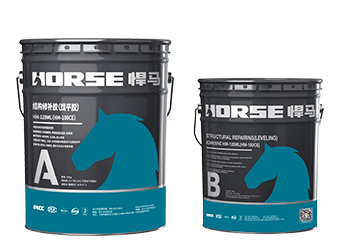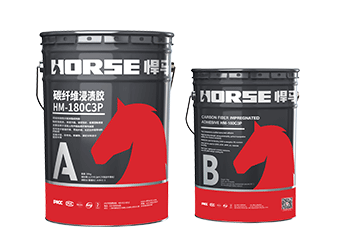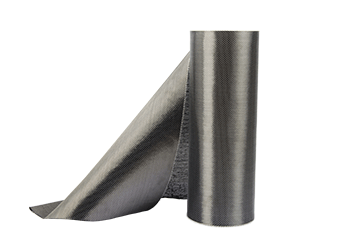Solutions
Horse Construction offers full range of structural strengthening materials with technical supports, documentation supports, products supports, project supports.
application of unidirectional carbon fiber fabric in various concrete reinforcement projects
The application of unidirectional carbon fiber cloth in the reinforcement of concrete beam
1. Failure characteristics of concrete beams strengthened by unidirectional carbon fiber fabric
There are 4 types of beam damage after reinforcement with unidirectional carbon fiber cloth:
1) The concrete in the compression zone is crushed;
2) One-way carbon fiber bursting damage;
3) Bond failure (the concrete is pulled down). This type of damage is caused by the combined action of the shear stress and normal stress of the glue acting on the concrete surface to cause the generation and expansion of horizontal cracks, causing the concrete to be pulled down, and sometimes even the entire concrete protective layer of the beam is pulled down;
4) The peeling failure occurs at the concrete-adhesive interface (there is very little concrete sticking to the unidirectional carbon fiber torn off). This is generally due to the unsatisfactory performance of the glue or the poor construction quality, which leads to damage at the concrete-glue interface.
What kind of damage occurs is mainly determined by the anchoring performance of the unidirectional carbon fiber cloth. When the beam is damaged, the diagonal crack near the support is at the bottom, and the unidirectional carbon fiber cloth there has a larger anchoring length, so the carbon fiber cloth is often broken. The oblique crack near the loading point passes through the top of the beam, where the anchoring length of the unidirectional carbon fiber cloth is very short, so bond failure often occurs. Therefore, it is extremely important to ensure the anchoring performance.
2. Force characteristics
After the reinforcement measures are taken, the increase in the flexural capacity of the beam increases with the increase in the area of the unidirectional carbon fiber cloth, but the increase in the flexural capacity of the beam is not proportional to the increase in the area of the unidirectional carbon fiber cloth. Proportional. When there are fewer layers of unidirectional carbon fiber cloth, the growth rate is large. As the number of layers of unidirectional carbon fiber cloth increases, the carbon fibers of each layer cannot work together completely, and the strength of some carbon fibers is not fully utilized. In addition, the increase in the amount of unidirectional carbon fiber cloth will also change the failure mode of the component. For example, the failure of a beam with 1 layer of cloth starts when the carbon fiber is pulled off, while the beam with 5 layers of cloth is crushed by the concrete in the compression zone, resulting in the final failure of the component. Generally, when the width of unidirectional carbon fiber cloth is smaller, the bending bearing capacity of the beam is greatly improved. The reason is that the fiber bundles in the carbon fiber cloth work together better after slitting, so the efficiency of the use of unidirectional carbon fiber cloth is better. Used throughout. Therefore, in engineering design, it is not generally considered that the more carbon fiber cloth is used, the better. In the case of the same amount of carbon fiber, the reinforcement scheme with small strip spacing and few layers is better than the reinforcement scheme with large strip spacing and many layers.
3. Influence of reinforcement on crack morphology
The unidirectional carbon fiber cloth reinforcement has little effect on the cracking load of the beam, but as the load increases, the unidirectional carbon fiber cloth should inhibit the development of cracks and play a greater role. Due to the restraint effect of the unidirectional carbon fiber cloth, the cracks of the reinforced beam develop more slowly, the crack spacing becomes smaller, the number becomes larger, and the width becomes smaller. Moreover, after reinforcement, when the load acting on the beam is large, a large shear stress is generated at the concrete-glue interface. Therefore, even in the purely curved section, there will be some oblique cracks at the bottom of the beam. In particular, the beams reinforced with 3 layers of carbon fiber cloth have nearly horizontal cracks in the pure bending section. If the load continues to increase, the concrete is easily pulled down and damaged.
4. The influence of construction process on the strength of reinforced components
The stiffness of the component after reinforcement with unidirectional carbon fiber cloth largely depends on the construction process of reinforcement by carbon fiber cloth. It is different from the general construction process, such as poor concrete pouring, but the strength is reduced, and the unidirectional carbon fiber construction method is incorrect, the strength is zero. Because unidirectional carbon fiber is a very soft material, only when it is attached to the coated surface impregnated with resin can it produce great strength. Therefore, the correctness of the carbon fiber construction method is very important.
You can find anything here you are in need of, have a trust trying on these products, you will find the big difference after that.

Good thixotropy carbon fiber leveling adhesive for concrete surface repairing

Good impregnation carbon fiber adhesive for applying carbon fiber reinforced polymer(CFRP) wrap for structural strengthening

High strength, unidirectional carbon fiber fabric pre-saturated to form a carbon fiber reinforced polymer (CFRP) fabric used to strengthen structural concrete elements.